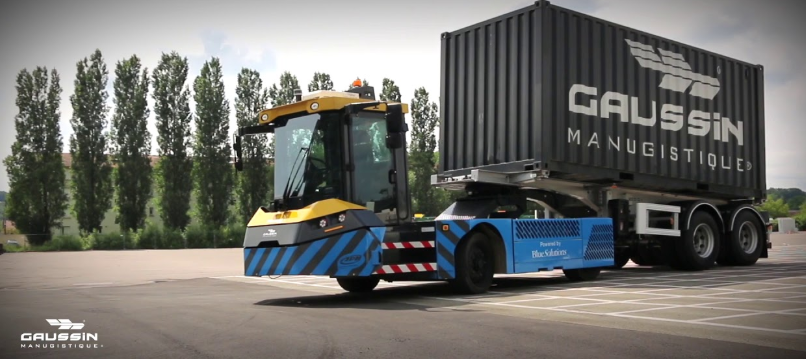
Our investment is accelerating the deployment of low carbon projects and helping to decarbonise Wellington’s port.
The green credit facility provided by NZGIF has been used exclusively to fund low carbon projects which reduce CentrePort’s overall carbon footprint, such as the introduction of electric vehicles to replace diesel trucks, on-site renewable energy generation and energy efficiency upgrades.
The facility ensures these projects remain a priority and are developed alongside the wider regeneration of the port. The flexibility of NZGIF’s facility made it an attractive proposition for CentrePort.
CentrePort, which serves the lower North Island and upper South Island, has used the credit line to purchase French-made electric-powered container haulers – the first of their kind in New Zealand – which reduce the port’s emissions but also lower its operating costs.
The catalyst for the work is CentrePort’s regeneration plan following the Kaikōura earthquake in 2016. NZGIF took the lead in providing the finance to ensure the long-term regeneration of the port achieves a low carbon outcome.
NZGIF and CentrePort case study
NZGIF and CentrePort are working together to decarbonise operations at one of New Zealand's largest ports. The $15m investment has helped CentrePort replace its diesel container transfer vehicles with 100% electric vehicles, and is also supporting a host of other decarbonisation initiatives. Check out the video for more.
Benefits
$ lower costs |
Increase in supply chain efficiency From CentrePort’s point of view the investment has strong business drivers, delivering a more efficient supply chain system with lower running costs, as well as lower emissions. Successful investment in electrification, renewables and efficiency not only assists the port to achieve its climate goals and reduce the region’s carbon footprint, but also provides an example for other companies in the port sector and beyond. |
40 tonnes saved |
Road to Rail conversion project has saved 40 tonnes of carbon per year, reduced business costs and increased efficiency The Road to Rail conversion project involved the installation of the necessary capital improvements (rail sidings, etc) to allow greater freight volumes to be transported to CentrePort via rail and remove the need for ‘road bridging’ (using trucks to transport the freight from the KiwiRail depot to the port), a process which had been in place since the Kaikoura earthquake. The new service now allows 15 freight trains per week, each holding 15 log wagons and 30 container wagons. Reducing the number of truck trips saves an estimated 40 tonnes of carbon per year. |
8% reduction |
Electrification of tractor trailer units will reduce CentrePort’s carbon footprint by 250 tonnes per year This represents an 8% reduction in CentrePort’s overall carbon footprint, which was estimated to be nearly 3000 tonnes in 2018. |

NZGIF's investment enabled CentrePort to purchase seven Gaussin electric-powered container haulers.